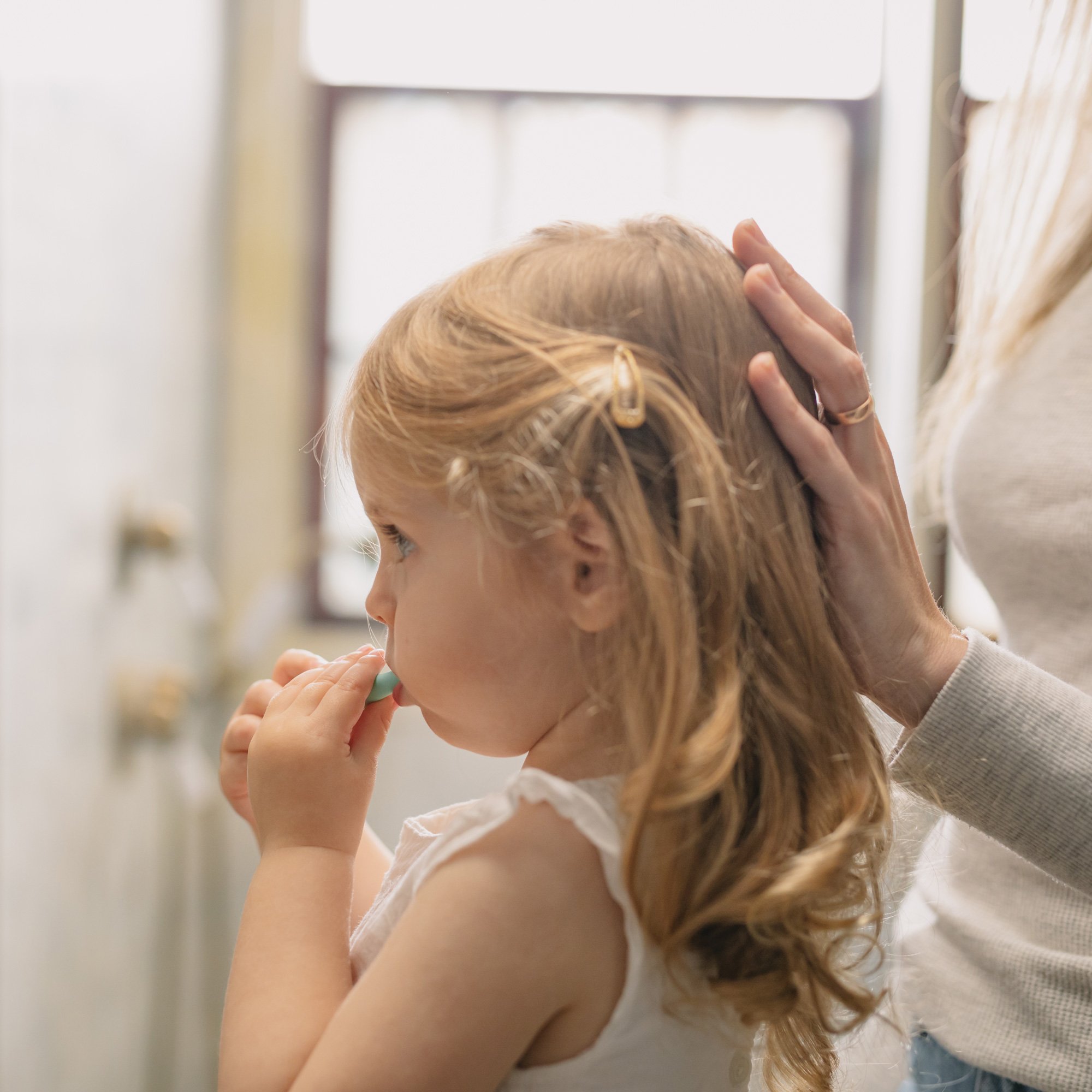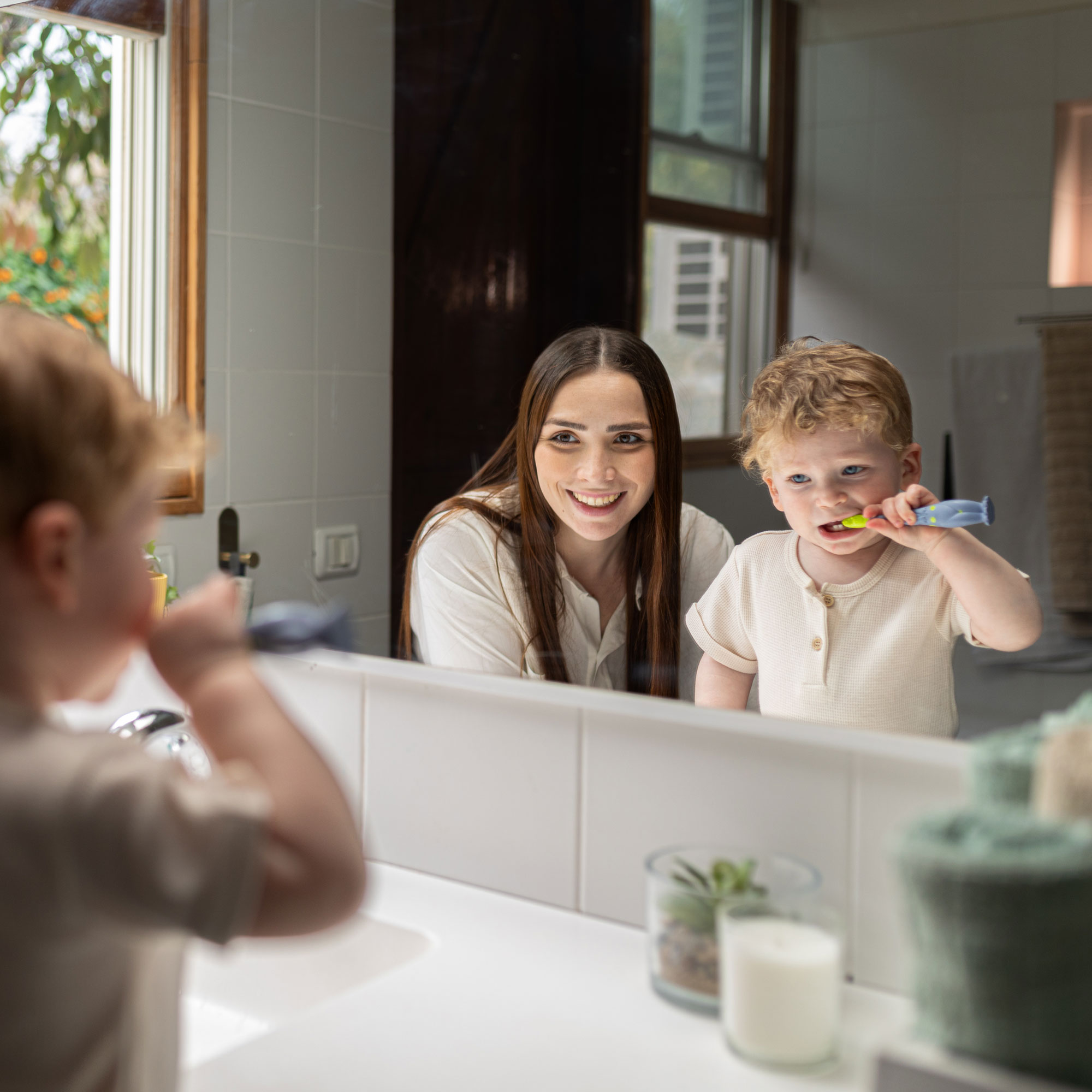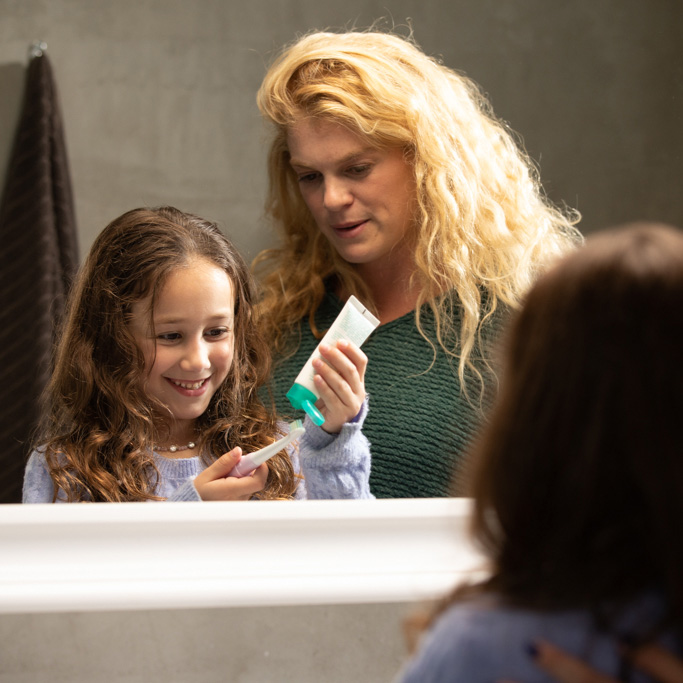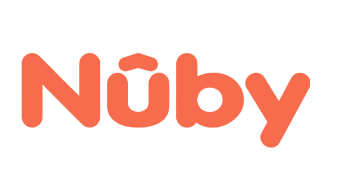When your baby’s first tooth pops through, it’ll be time to introduce proper dental care! Brushing your child’s teeth as part of their daily routine early will make it easier for them to keep up and understand why teeth brushing is so important later on.
Ideally, you should brush your child’s teeth twice a day, morning and night, to help remove any bacteria or plaque buildup, which causes tooth decay and gum disease. From a younger age, it’s best to use a soft cloth or a child’s soft toothbrush like our NanaNubs Banana Massaging Toothbrush for their delicate teeth and gums.
You’ll need to help them brush their teeth until they are old enough and have the right motor skills to do it properly themselves. Here, we’ll explain when children can start brushing their teeth independently and how to ensure they’re brushing correctly.

Introducing Toothbrushing At Age 2
When your child turns 2, you’ll still need to brush their teeth for them as they won’t have the skills just yet to brush themselves. But you can start teaching them some independence with brushing. They’ll be able to use a small, pea-sized amount of low-fluoride children’s toothpaste at this age. Before they turn two, you should brush their teeth with just water or a non-fluoride children’s toothpaste.
Have your child spit the toothpaste out and give them some water to rinse their mouth out with. This teaches them not to swallow toothpaste and allows them a small amount of control when it comes to taking care of their teeth.
Set a good example
Toddlers learn a surprising amount just by watching their parents. So, you should set a good example by brushing your own teeth morning and night and letting them observe your actions. Soon enough, they’ll be reaching for the toothbrush, trying to mimic what you did and wanting to understand why.
Toothbrushing After Age 6
At six years old, your child will be able to use a small amount of standard fluoride toothpaste and may start showing signs of being able to brush their teeth on their own. While they won’t be able to brush their teeth properly, you might see them reaching for the toothbrush themselves and wanting to try. Allow them to practice brushing alone and then finish it off for them to make sure each tooth has been brushed. At this stage, it’s important for you to take a step back and let them learn, but they will still need some help to ensure proper cleaning.

Essential Components Of An Independent Brusher
Brushing your teeth is actually a pretty complex thing to do. Of course, as adults, we don’t need to think twice about it and can do it as easily as breathing. But, for little ones, it requires a lot more focus, concentration, and movement. Below are some of the essential components a toddler needs to become a big, independent brusher.
Dexterity
Smaller hands will have a harder time using a toothbrush as they won’t be able to grip it as easily as an adult. But, you’ll know when they have the dexterity for brushing when they can tie their own shoelaces.
Responsibility
While teeth brushing is just part of our natural routine, it might take a while for children to build the habit and understand the responsibility. When your child has become more trustworthy with their hygiene, for example, washing their hands routinely, combing their hair, or even tidying away their toys, they’ll probably be ready to start brushing their teeth alone, too.
Spitting
Spitting may not seem like an important skill, but it’s important they learn to spit out toothpaste instead of swallowing it, which is why they should only use a pea-sized amount. If you introduced spitting toothpaste out at a young age, it should be easier and more natural for them to do. But, if they still aren’t sure, they’ll need supervision while brushing until they’ve mastered the skill.

Age 8: Keep An Eye On Their Brushing
At eight years old, your child should be ready to brush their own teeth! But they may need a little parent supervision every now and then, just so you can be sure they’re brushing for long enough. At this age, you can also introduce them to flossing. Remember, it’s easy for a young child to quickly fall out of a habit. So check in with them every now and then and remind them of the proper brushing habits.
Proper Habits
Teach your child the following proper habits when it comes to brushing their teeth, and they’ll be set up for successful brushing for life.
Use Small Circular Motions
Although teeth are very hard, stronger than bone even, brushing too hard back and forth can weaken the enamel. So, using small, circular motions will reduce the pressure on their teeth and ensure they are brushed slowly and properly.
Brush All Sides Of Teeth And Gums
Make sure they spend an even amount of time brushing all sides of their teeth and gums rather than spending more time on one side than the other. Brushing alongside the gum line will also ensure that every tooth has been thoroughly cleaned.
Brush For 2 Minutes
Brushing for 2 minutes is an optimal amount of time for clean teeth. If they’re struggling to keep it up for that long, you can make it fun by playing their favorite song of the same length or setting up a timer and giving them a reward, such as a special sticker, if they brush until the end.
If your child is teething and struggling to accept you brushing their teeth, try to soothe them beforehand with our range of teething toys to help relieve any pain. Our cooling teethers will also help to temporarily numb their mouths, allowing you to get in and brush their pearly whites comfortably.



